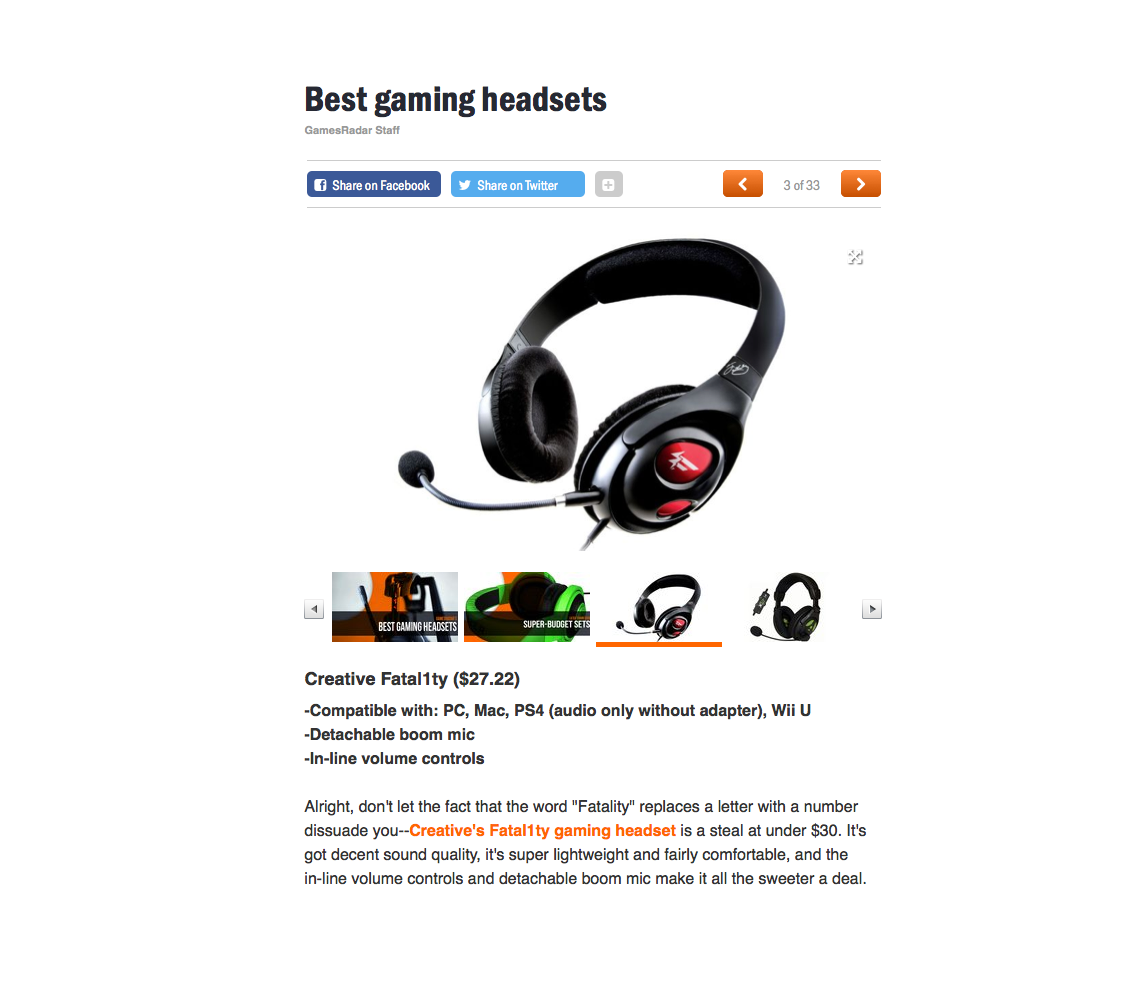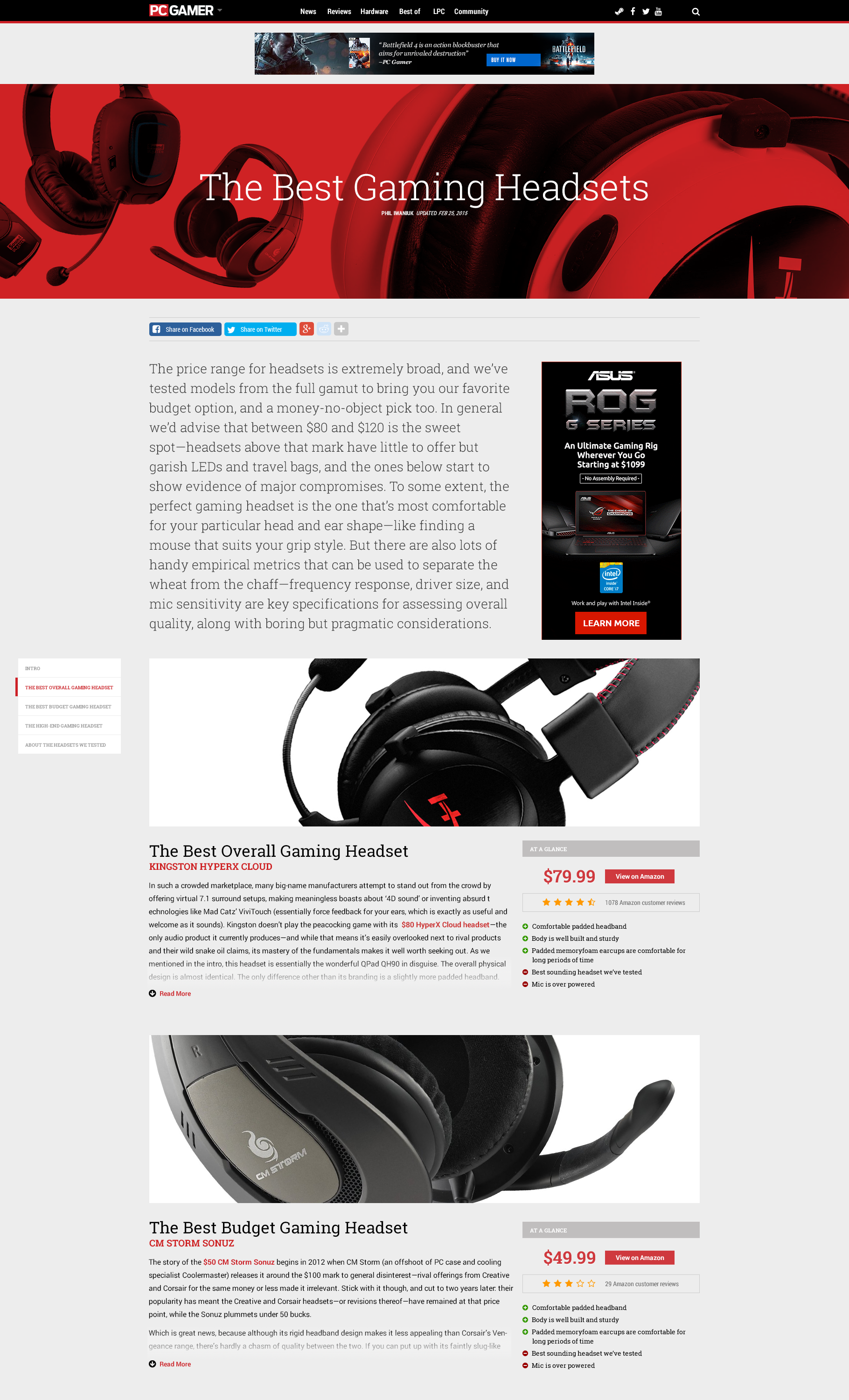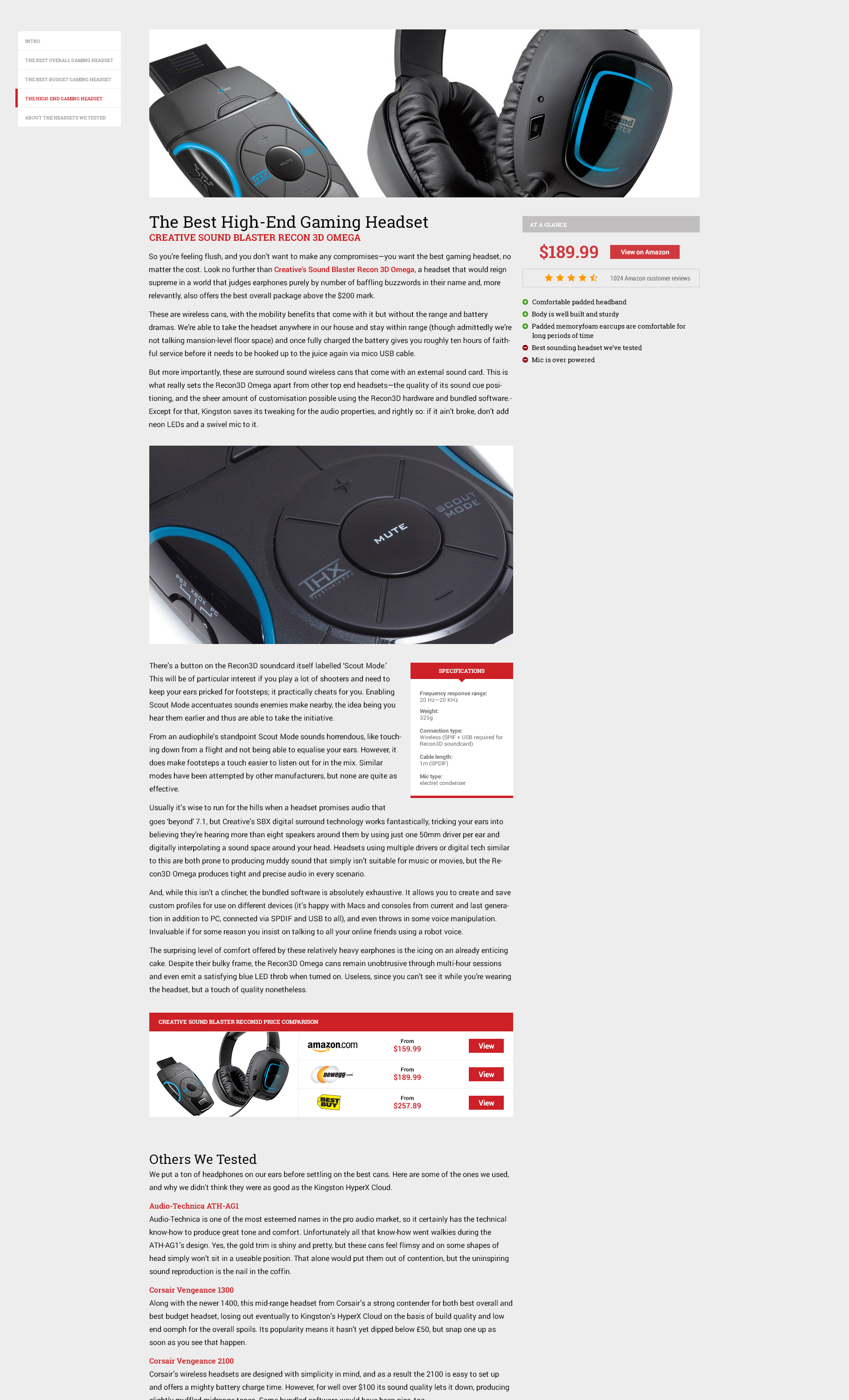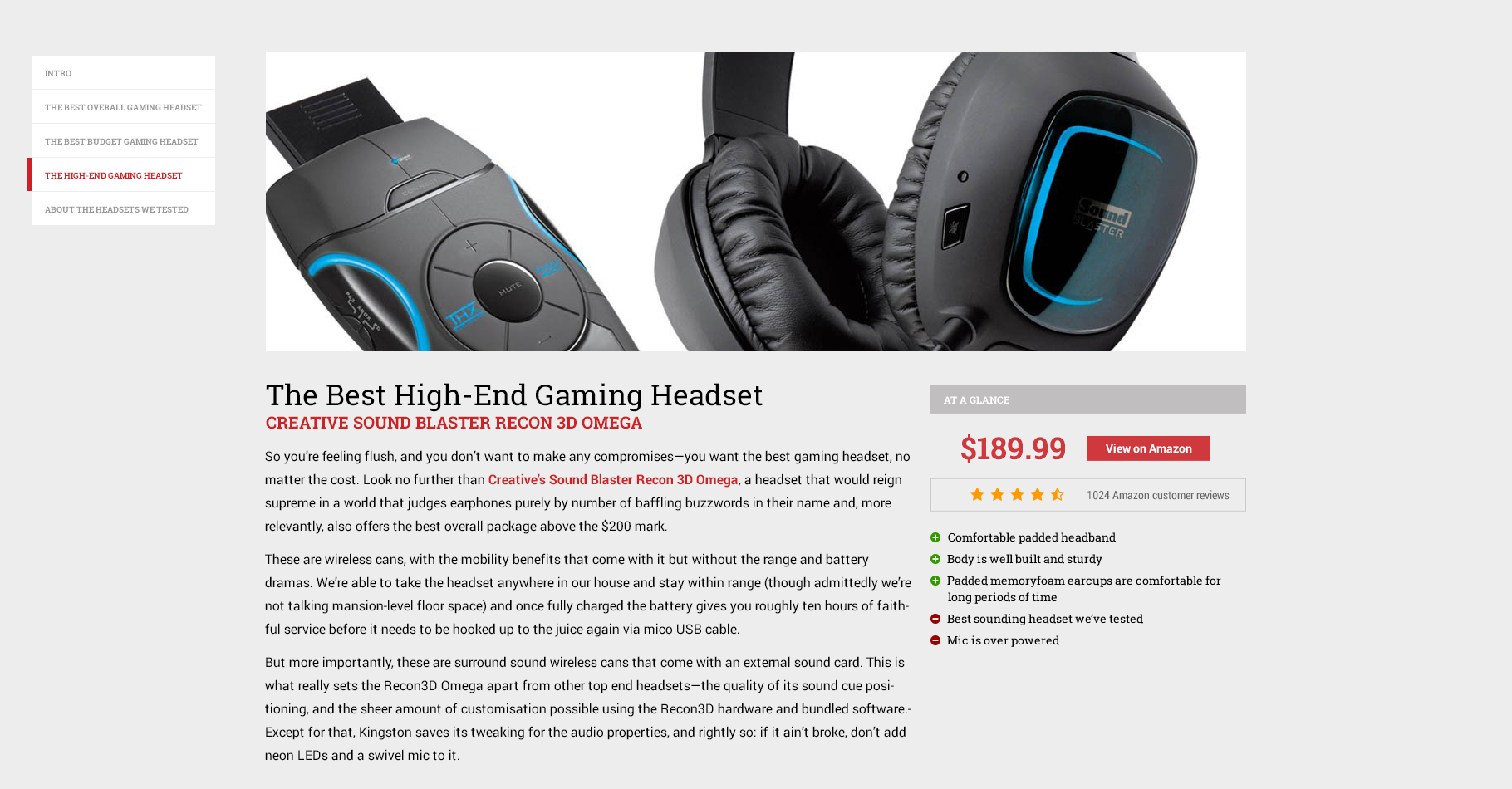PC Gamer Buyers Guide
PC Gamer is known as the premier destination for PC gamers across the world. We were experiencing a huge trend towards PC gaming and peripherals. Because of PC Gamer’s brand awareness – we decided to deliver the very best reviews and recommendations to leverage affiliate links. We also learned a few things by exploring processes new to the organization.
Role
Director of User Experience
Responsibilities
User Testing
Interaction Design
Visual Design
Collaborators
Bart Jaworski – VP Internet Ops.
Alex Afterman – Product Manager
Ray Pawulich – Affiliate Manager
Deliverables
User Research
User Tests
Interaction Design
Visual Design Comps
The Challenge
PC Gamer buyers guide initially started from generic article template, 960px fixed on a two column grid, one or two images and whole lot of text. The affiliate links were embedded as standard HTML links. For users, they were not an exciting destination. We were in need of an upgrade. Our goals were to…

Goals
- Improve ecommerce conversion rate on buying guides
- Increase traffic to hardware section and buying guides
- Increase affiliate revenue from hardware and buying guides content
- Improve user satisfaction with hardware section and buying guide
Simultaneously we put forth a data driven approach to how we wanted to move forward with product decisions. We had existing data through Google Analytics, CrazyEgg, and ComScore. The analytics tools gave prevailing insight but brought us little knowledge of what a users needs will be in the impending buyers guide. In the spring of 2015, I vetted emerging methodologies and introduced something new to the organization – a system of qualitative user research. We would then generate the data we needed for a certified path to an informed design decision
The Process
Several questions came to mind. How do we go about doing a survey with our most engaged users? What types of questions should we ask? What kind of tools were out there? How do we administer the research? What was our budget like? What is this process like? Who and what should we follow?
We were also concerned with they type of answers we would receive. How do we extract the information? How do we avoid one word answers? Will the answers provide us something we already know?
We came across UserTesting.com from our colleagues in the U.K.. After examining best practices we came across a series of questions aimed to create dialog with our users. We also wanted to hear about their purchasing habits and how well PC Gamer’s content informed their decisions. It was imperative that we facilitate a discussion with our users and not lead them to a dead end. We came up with a list of questions.
- When you’re looking to buy a new gaming laptop, what is your research and purchase process? Do you set your budget first or find what’s best then determine your budget? Do you search on Google first or do you go to a trusted tech site? What sites?
- How does PC Gamer content fit in to that process? How does the existing PC Gamer site and content work for you?
- Go to <guide>. Does it give you the information you need to make a purchase decision? If not, what other information or functionality would you like to see? Are you able to find the purchase link for the item you want buy?
- Which other sites do you use for buying advice, and why?
- When looking for a new gaming laptop who is your preferred retailer and why? Would you like to see PC Gamer include more special offers as part of hardware buying guides?
I generated a report and synthesized the information. After conducting over 20 interviews a pattern started to emerge. Nearly all of the respondents mentioned reading user generated reviews on Amazon and NewEgg. Our findings also included that the majority of our users would also like to see a budget option next to the main pick. I answered the questions and turned them into a list of features for the buyers guide. We also validated our design practices by listing out features the user found helpful. A large product image, price, Amazon score, Amazon link, a TLDR section that had 2-3 pros and 2-3 cons, we all added to our buying guide.
Learning
It was a first for our company to have a fully data driven design process. Between our editorial, marketing, sales and internet ops teams, we created a product and process that had complete buy in for all of our stakeholders. The conversion rates exceeded our expectations. Conversion rose 500% over the previous design. The process was shared globally throughout the organization. The information helped with our product roadmap by focusing on the users rather than relying on theory. We emerged with a system that everyone felt good about.



